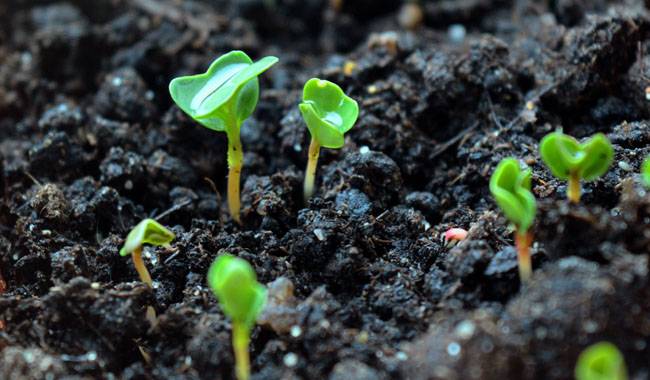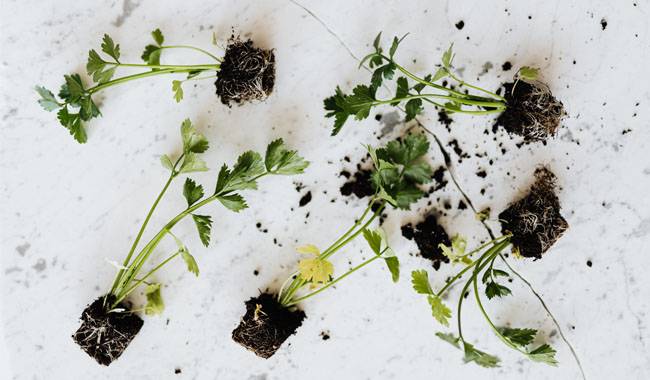
Every gardener knows that high-quality seedlings are the key to a good harvest, and if they turn out to be stunted and sluggish, the bounty of the year will be forgotten.
Any deviation from the normal growth and development of seedlings should be prevented in one way or another – watering, lighting, adjusting the temperature and humidity in the room, or making certain fertilizers.
This is just about the nutrition of seedlings, and today we are going to talk about it. We talk about the most important nutrients for crops and the way fertilize seedlings these plants, which are usually grown from seedlings.
AT WHAT TIME IS IT BETTER TO FERTILIZE YOUNG SEEDLINGS?
Gardeners believe that the best fertilizer for young plants is a compound fertilizer, i.e. one that contains all three important and familiar ingredients to all of us, but this is not always justified because in soil, especially purchased soil, however, in vegetables, one or several of these elements may already be present and, as you know, an overdose is almost less dangerous than its deficiency. Therefore, it is recommended that you fertilize your plants with a fertilizer that contains only one important nutrient.
Direct fertilization of young plants with potassium, phosphorus, or nitrogen should be done early in the morning outside and indoors when it is cool. When adding nutrients to the soil during supplemental fertilization, it is very important not to leave any water droplets on the leaves or stems of your plants, as the stems and leaves in these areas can later develop burns under the sun, which will negatively affect the overall development of your plants.
THE BEST NITROGEN FERTILIZER TO FERTILIZE YOUNG PLANTS
As you know, thanks to nitrogen, protein synthesis occurs in the plant and the buds produce chlorophyll. In the case of nitrogen deficiency, the lower leaves of the sprouts usually turn yellow and the growth and development of the plant itself slow down.
If you notice this in the leaves when you check the seedlings, fertilize them immediately with a nitrogen compound. As a fertilizer that provides the compound “N” to the plant, you can use ammonium nitrate (26% to 34.4% nitrogen), ammonium sulfate or sulfur (up to 21% nitrogen), urea (up to 46% nitrogen), or ammonia (16% to 20% nitrogen).
Naturally, water-soluble fertilizers are more effective for young plants, and nitrogen fertilizers are no exception. When watered (watered, to be exact, not when dry fertilizer is applied), what is needed for germination will enter the plant more quickly and the leaves and trunk will quickly become normal, as will the color and development.
As for fertilizer concentration, it should be reduced by about half compared to the fertilizer concentration applied to adult plants. For example, for young seedlings, you need about one and a half tablespoons of nitrogen fertilizer per bucket of water.
Fertilizer application technique for nitrogen fertilizer: Two hours before applying the fertilizer, water the plants to moisten the soil well, then make the fertilizer into a dissolved form and lightly loosen the soil after one hour.
THE BEST POTASSIUM-CONTAINING FERTILIZER TO NOURISH YOUNG PLANTS
Not everyone may know that potassium helps seedlings to absorb carbon dioxide from the air, it stimulates the production of sugar and helps plants to gain immunity. A lack of potassium on the lowest leaves of seedlings can result in green spots, new leaves, if formed, are much smaller than the size of the culture, and even young leaves may have rusted at their edges.
To eliminate potassium deficiency in seedlings, the following fertilizers can be used: potassium sulfate or potassium sulfate (up to 50% potassium), potassium oxide or potassium sulfate and magnesium sulfate (up to 30% potassium), potassium monophosphate (up to 33% potassium) and potassium nitrate (up to 44% potassium).
It is most appropriate to fertilize the plants with potassium-containing substances for the first time after the seedlings have grown two or three leaves. At this point, you can dissolve about 8-9 g of monophosphate in a bucket of water and apply it per square meter of the seedbed.
Potassium fertilizer can be applied again a week after harvesting or even after planting the plants in a fixed position in the soil or greenhouse, with the addition allowed to increase by one or one and a half grams.
THE BEST FERTILIZER FOR SEEDLINGS WITH PHOSPHORUS
We all know that this element is actively involved in the production of sugar and without its presence, the roots of the plant element cannot grow and develop properly. Due to the lack of phosphorus in the soil, the leaves and stems of young seedlings become darker, sometimes turning purple. After some time, the leaves of the seedlings curl or develop other deformations, and may even fall off.
The best way to raise seedlings is the following phosphate fertilizer. Single calcium superphosphate (14% to 20% phosphorus), double calcium superphosphate (46% to 48% phosphorus), ammophos (up to 52% phosphorus), diammophos (up to 46% phosphorus), potassium hexametaphosphate (55% to 60% phosphorus), phosphate powder (19% to 30% phosphorus), bone meal (29% to 34% phosphorus).
The lack of phosphorus is reflected in the leaves and stems of the seedlings, you can fertilize them with simple calcium superphosphate, 3.5 to 4 grams of the drug per liter of water, which is enough for one square meter of seedlings.
Remember that it is better to feed phosphorus to seedlings only after harvesting, when it takes root and grows significantly – that is when it forms new elements of the asexual part, such as new leaves. Multiple feedings are possible until the phosphorus deficiency is completely eliminated, but there should always be a week between feedings.
WHAT CAN I DO TO MAKE THE SEEDLINGS DEVELOP HARMONIOUSLY?
To ensure that the seedlings of any culture develop as harmoniously as possible, the leaves and stems should look the most appropriate length and thickness, and it is necessary to fertilize them not only with minerals but also with organic fertilizers.
But do not forget to apply manure, it is necessary to dilute it 10 times with water, and if you use chicken manure, 15-20 times with water, otherwise the seedlings will not be able to resist destroying it, that is, simply burn the root system.
Do not forget also the excellent growth stimulants, which have proved in practice their reliability and effectiveness in improving immunity and stimulating the growth and development of “backward” seedlings or those whose roots were damaged during harvesting or transplanting. The main thing is to clearly follow the instructions on the package.
HOW TO FERTILIZE SEEDLINGS OF VARIOUS PLANTS?

Now let’s talk about the best fertilizers and how to fertilize different types of plants through seedlings. We decided to highlight the cultures most often grown through seedlings and give a general fertilizer regimen that has been tested and is effective, which means that you can use it safely.
FERTILIZATION OF TOMATO SEEDLINGS
The first feeding should be done immediately after the plant forms its third true leaf. Here you can do a liquid fertilizer, for example, 5 g of nitroaminophoska per bucket of water – the standard per square meter of seedlings.
The second application can be made two weeks after the implementation of the curing, you can also use nitrophenols, but one tablespoon of nitrophenols should be diluted in a bucket of water, 100 ml per plant.
The third dressing can be done 14 days after the second dressing, again using the same concentration of nitrophenols.
For the fourth application, when the seedlings reach 60 days old, a phosphorus-potassium fertilizer should be applied by dissolving one tablespoon of simple calcium superphosphate and two tablespoons of charcoal in a bucket of water in the ratio of about one cup per plant.
FERTILIZATION OF SWEET PEPPER SEEDLINGS
The first feeding of bell peppers can be done when the plants form their first real leaves. Then you need to make a solution of urea by dissolving a tablespoon of this fertilizer in a bucket of water beforehand. This amount is enough for each square meter of seedlings.
The second application of fertilizer can be made 20 days later, applying the same amount of fertilizer.
The third fertilization is usually done a week before the seedlings are planted, but here it is better to use double calcium superphosphate in the amount of one tablespoon per bucket of water, with a standard of 100 ml per plant.
FERTILIZATION OF YOUNG CUCUMBER SEEDLINGS
As a rule, cucumbers are fertilized twice when receiving seedlings. The first feeding is done when the plant forms a real leaf, and then 14 days after the first feeding. For cucumbers, it is best to use a compound fertilizer consisting of one teaspoon of urea, one teaspoon of potassium sulfate, and one teaspoon of simple calcium superphosphate, all of which should be diluted in a bucket of soft water – the rate of consumption per square meter of seedlings.
Two weeks after the second fertilization, the seedlings can be transplanted to a fixed place and, at planting, fertilized with ammonia, adding a teaspoon of fertilizer to each hole, well mixed with the soil.
FERTILIZATION OF CABBAGE SPROUT SEEDLINGS
The first application of fertilizer for sprouting is usually one week after harvesting, using poultry manure, diluted in 20 times water.
The second fertilization of cabbage shoots takes seven days before planting the seedlings in a fixed place, usually using a mixture of calcium superphosphate and charcoal, which requires one teaspoon of calcium superphosphate and two teaspoons of charcoal, dissolved in one liter of water, which is enough for ten cabbage plants.
Directly when planting cabbage shoots, not in a well, but under recultivation before the soil is prepared, a few tablespoons of calcium superphosphate, a teaspoon of urea, and 5-7 kg of humus or compost should be used per square meter.
FERTILIZATION OF FLOWER CROP SEEDLINGS
The first fertilization of flower crop seedlings is carried out seven days after harvesting and can be done with nitroglycerin (5 g per bucket of water, rate per square meter of seedbed), then the seedlings can be fertilized with the same composition every 10 days.







